How We Ship Precast Concrete
Precast concrete is manufactured in a controlled environment and then transported to job sites for installation. Efficient and reliable transportation is critical to delivering high-quality precast elements while maintaining project timelines. Wells' transportation fleet is equipped to handle the movement of heavy and oversized precast products, ensuring safe and efficient delivery across the United States.
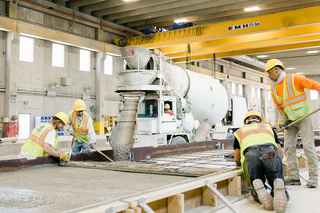
Transporting precast concrete requires careful planning and specialized equipment to handle large, heavy elements. Each load is carefully analyzed to ensure compliance with road regulations, weight limits, and site logistics. The range of our transportation extends across the country, enabling us to serve a variety of projects, from small commercial buildings to large-scale infrastructure.
Sustainability in Precast Transportation
Sustainability is a key focus in precast transportation. By optimizing load configurations and using efficient routing, Wells minimizes fuel consumption and emissions. Precast components are typically shipped within a 200-mile radius of their manufacturing facility, ensuring that manufacturing happens close to project sites, reducing truck route distances and limiting fuel consumption. Additionally, precast concrete's ability to be manufactured off-site and transported in large sections reduces on-site waste and construction timelines, leading to more sustainable building practices.
Types of Trailers for Precast Concrete
To accommodate the varying sizes and shapes of precast components, Wells utilizes a range of specialized trailers designed for oversized and overweight loads.
Flat Trailer
Flat trailers are the most commonly used trailers for transporting precast concrete. They are used for shipping most wall panels, columns, beams, and double tees. If a piece of precast does not fit onto a flat trailer, we switch to a specialty trailer.

Drop Deck Flat Trailer
A drop deck trailer is used for shipping 10' wide wall panels and spandrels on edge. It is also commonly used for transporting three double tees on a single load. Panels for high-rise buildings are typically shipped on 45-degree racks or vertically on a drop deck trailer.
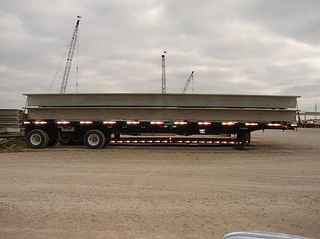
45-Degree Rack Trailer
The 45-degree rack trailers are designed for shipping 12' and 14' wide panels that cannot be transported flat. Panels for high-rise buildings are often shipped using this method. These racks can be attached to either flat trailers or drop deck trailers for efficient transport.
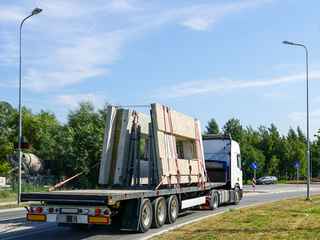
Expandable Trailer
Expandable trailers are capable of stretching from 48' to 73' in length. They are used for shipping longer precast components, such as walls, spandrels, columns, and double tees that exceed 55' in length.
IES Trailer
IES trailers are a specialized type of trailer used exclusively for transporting up to four IES wall panels vertically on a single trailer. This method maximizes space and enhances transportation efficiency.
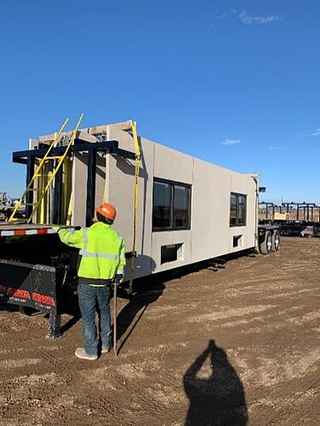
Expandable Trailer
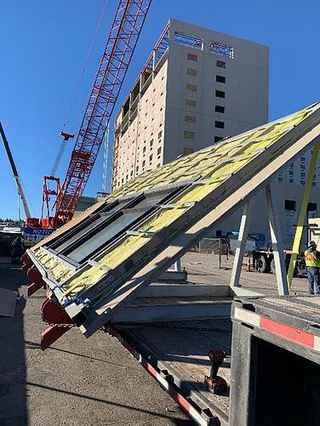
IES Trailer
Pole Trailer
Pole trailers are designed for shipping extremely long double tees, ranging from 75' to 110' in length. These trailers provide the necessary support to transport these oversized elements safely.
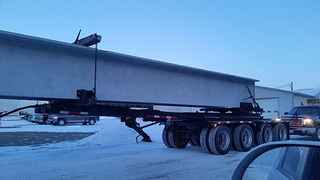
Ready for Any Precast Transportation Need
With hundreds of trailers ready to use, Wells is fully equipped to ship any type of precast concrete element, ensuring safe and efficient delivery to your project site. Our expertise in precast transportation allows us to optimize logistics, maintain project timelines, and contribute to sustainable construction practices.
